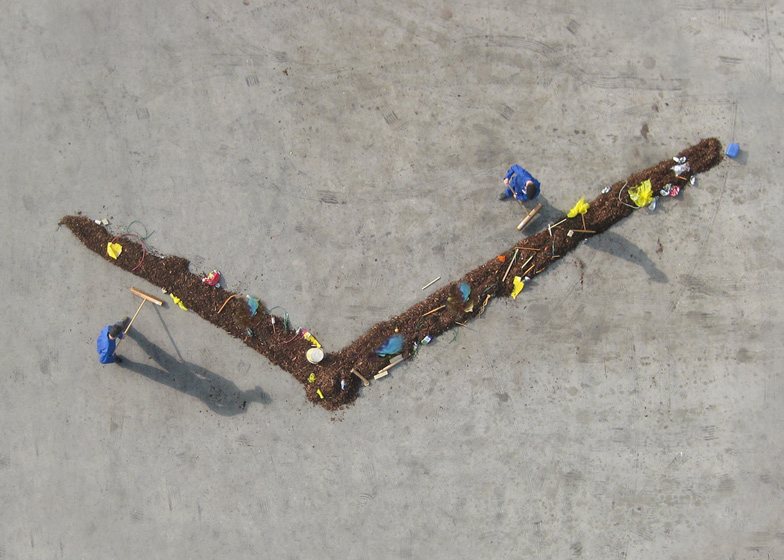The final extract from our Book of Ideas selected by Dezeen editor-in-chief Marcus Fairs this week is a 24-hour performance involving two janitors constantly sweeping lines of rubbish to represent the hand of a clock. "Design performances were in vogue at the tail end of the noughties. Design fairs featured young creatives drilling, sawing and hammering and the process of making chairs, tables and lighting was suddenly seen as more interesting than the finished products," explains Fairs.
"Dutch designer Maarten Baas had shot to fame earlier in the decade for his Smoke range of furniture that was generated via the most extreme performative process of them all: he scorched timber items with a blowtorch. Baas' 2009 show in Milan proved to be the high-water mark of the design performance movement. Within a darkened warehouse he presented a range of functioning clocks in which the passing time was marked by human actions, rather than machinery or circuitry."
"Sweeper Clock was the most dramatic of these: a 24-hour, non-stop performance involving two men sweeping rubbish around a concrete yard, filmed from above, with the detritus forming the moving hands of a clock as they worked," he describes. "Whereas most other design performances were merely a means to an end, Baas' clocks were also the product: you could buy the movie on a hard-drive and turn your widescreen TV or computer screen into a clock."
Sweeper Clock by Maarten Baas
Two janitors continuously sweep a large expanse of concrete as part of a 24-hour long performance by designer Maarten Baas. Pushing two lines of trash around with their brooms, the two men mark the time of day, with one pile of detritus advancing precisely every minute, and the other every hour.
The performance was recorded by a camera mounted overhead and went on for 12 hours non-stop to create a film that, when endlessly looped, functions as a clock.
Sweeper Clock was one of a series of time-based films created by Baas in 2009 as part of a project called Real Time. Shown on screens during the furniture fair in Milan, the films were also available for sale on digital hard drives that, when plugged into TV screens, turn into working timepieces.
Other elements of Real Time include Analog Digital Clock, a film in which a performer replicates a digital clock by painting over and wiping clean red panels on a black glass screen; and Grandfather Clock, which appears to feature a person inside an upright case repeatedly wiping off and drawing hands on the back of a glass clock face with a black pen.
The boundary between art and design has blurred in recent years with the rise of the limited edition, gallery-driven collectors market, yet Baas insists that the functional nature of these films – the fact that they tell the time – grounds them firmly in the world of design.
Read more about this project on Dezeen

